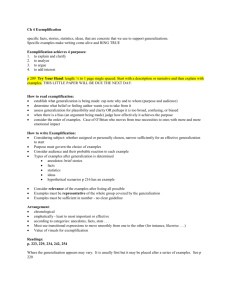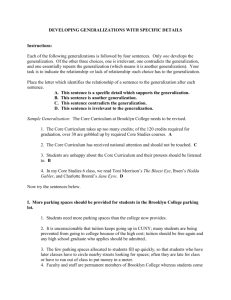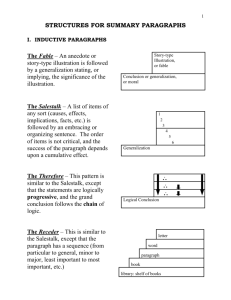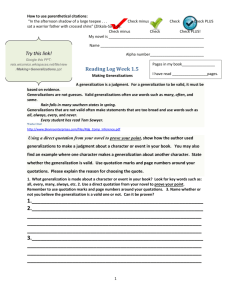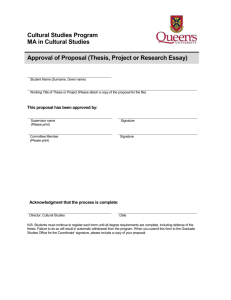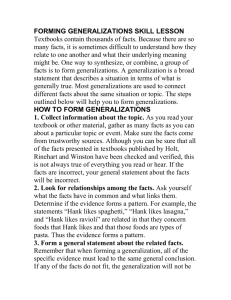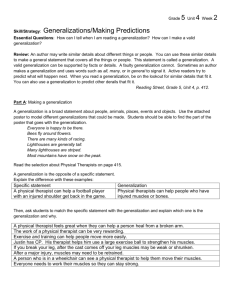wRITING tOOL #6: uSING eXEMPLFICATION TO eLABORATE
advertisement
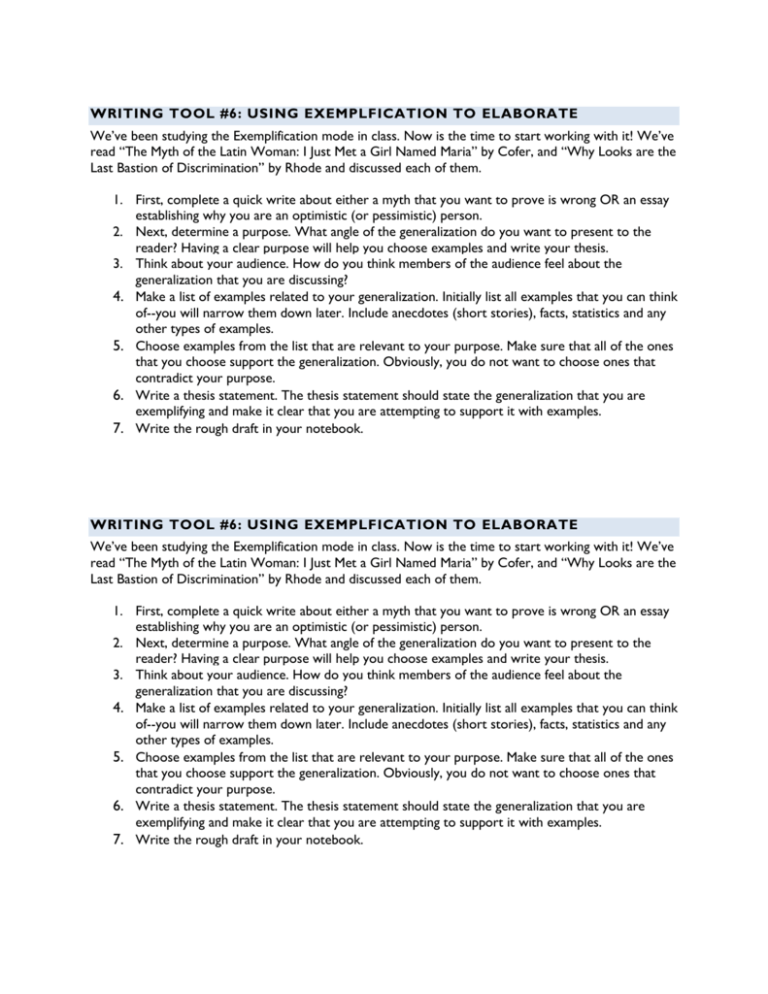
WRITING TOOL #6: USING EXEMPLFICATION TO ELABORATE We’ve been studying the Exemplification mode in class. Now is the time to start working with it! We’ve read “The Myth of the Latin Woman: I Just Met a Girl Named Maria” by Cofer, and “Why Looks are the Last Bastion of Discrimination” by Rhode and discussed each of them. 1. First, complete a quick write about either a myth that you want to prove is wrong OR an essay establishing why you are an optimistic (or pessimistic) person. 2. Next, determine a purpose. What angle of the generalization do you want to present to the reader? Having a clear purpose will help you choose examples and write your thesis. 3. Think about your audience. How do you think members of the audience feel about the generalization that you are discussing? 4. Make a list of examples related to your generalization. Initially list all examples that you can think of--you will narrow them down later. Include anecdotes (short stories), facts, statistics and any other types of examples. 5. Choose examples from the list that are relevant to your purpose. Make sure that all of the ones that you choose support the generalization. Obviously, you do not want to choose ones that contradict your purpose. 6. Write a thesis statement. The thesis statement should state the generalization that you are exemplifying and make it clear that you are attempting to support it with examples. 7. Write the rough draft in your notebook. WRITING TOOL #6: USING EXEMPLFICATION TO ELABORATE We’ve been studying the Exemplification mode in class. Now is the time to start working with it! We’ve read “The Myth of the Latin Woman: I Just Met a Girl Named Maria” by Cofer, and “Why Looks are the Last Bastion of Discrimination” by Rhode and discussed each of them. 1. First, complete a quick write about either a myth that you want to prove is wrong OR an essay establishing why you are an optimistic (or pessimistic) person. 2. Next, determine a purpose. What angle of the generalization do you want to present to the reader? Having a clear purpose will help you choose examples and write your thesis. 3. Think about your audience. How do you think members of the audience feel about the generalization that you are discussing? 4. Make a list of examples related to your generalization. Initially list all examples that you can think of--you will narrow them down later. Include anecdotes (short stories), facts, statistics and any other types of examples. 5. Choose examples from the list that are relevant to your purpose. Make sure that all of the ones that you choose support the generalization. Obviously, you do not want to choose ones that contradict your purpose. 6. Write a thesis statement. The thesis statement should state the generalization that you are exemplifying and make it clear that you are attempting to support it with examples. 7. Write the rough draft in your notebook.
